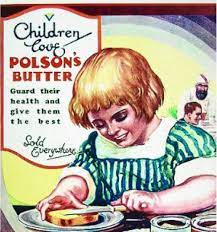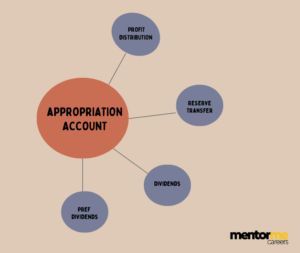Last updated on February 8th, 2024 at 01:56 pm
Since more than a thousand years ago, we have lived in a consumerist civilization. Products are, of course, one of the foundations supporting materialism and the “more is good” mindset. Items are being made, sold, marketed, traded, and even thrown away everywhere you look or go, and milk is one of them. In this article, we will discuss about the product life cycle of amul in a detailed case study.
INTRODUCTION TO PRODUCT LIFE CYCLE OF AMUL
Since more than a thousand years ago, we have lived in a consumerist civilization.
Products are, of course, one of the foundations supporting materialism and the “more is good” mindset. Items are being made, sold, marketed, traded, and even thrown away everywhere you look or go, and milk is one of them.
With a capacity of 115 million tonnes, India produces more milk than any other country. Milk consumption in India is still increasing, driven by stable population growth and increased wealth. The dairy industry is now expanding at a volume-based yearly growth rate of about 7%. The dairy market in India is estimated to be worth $45 billion. Considering that most people in India are vegetarians, milk plays a significant role in the daily diet. Indians use milk in various preparations, including creating yogurt or curd, boiling tea and coffee, and cooking a wide variety of Indian meals.
The majority of milk products are eaten fresh. But in recent years, the demand for labeled packaged foods has grown. Even though India processes just around 2% of its food, the dairy industry nonetheless undergoes the most processing (35% of the country’s total production, of which only 13% is done by the organized dairy sector).
SHORT STORY OF AMUL
India’s dairy cooperative movement, AMUL (Anand Milk Union Limited), was established in 1946. It is a brand name administered by Gujarat Co-operative Milk Marketing Federation Lt. (GCMMF), the top cooperative organization in Gujarat, India. It is now under the control of almost 2.6 million milk farmers.
AMUL, which has its headquarters in Anand, Gujarat, is a prime example of a cooperative business that succeeds over the long haul. It is among the greatest instances of cooperative success in a developing country.
Including annual sales of US $1050 million, Amul is the leading food company in India and the leading brand of pouched milk worldwide (2006-07). Currently, 10.16 million litres of milk are collected each day on average by Amul’s 2.6 million producer members. Aside from India, Amul has expanded into foreign markets such as Mauritius, the United Arab Emirates, the United States, Bangladesh, China, Australia, Singapore, Hong Kong, and a handful of South African nations. It failed in its 1994 attempt to break into the Japanese market, but it now has new ambitions to flood it. Sri Lanka is among the additional possible markets thought of.
Amul has a new objective now that it has reached the historical record of Rs. 6,700 crores. Mission 2020 was announced by Federation Chairman Parthi Bhatol. In the year 2020, the Gujarat dairy cooperative is projected to generate total revenue of Rs. 27,000 crores. Additionally, they plan to increase the dairy plant’s production capability to 20.7 million kilograms each day.
STAGES OF THE PRODUCT LIFE CYCLE OF AMUL
Throughout a product’s existence on the market, it goes through many stages. Each of the product lifecycle stages presents its difficulties and possibilities.
Throughout the life cycle of a product, profits fluctuate. The product life cycle of Amul has four distinct stages, including
Stage 1: Introduction stage in product life cycle of amul
That the very first farm, Kaira District Co-operative Milk Producers’ Union, was founded in the Gujarati district of Anand in 1946. It produced Amul in 1955 and transferred ownership of the brand name to GCMMF in 1973. Since farmers in Anand sold all of their milk through a cooperative union, it was customary to market the product under the AMUL brand. At first, just 250 liters of milk per day were obtained. However, milk collecting grew as people became more aware of the advantages of cooperation. When compared to the per capita milk supply, milk output increased by only 1% year between 1955 and 1970.
Stage 2: Growth
By 1980–81, 53.9 million metric tonnes of Amul milk had been produced, and in 1990–91, 84.6 million metric tonnes had been produced. The yearly growth rate during Operation Flood’s initial phase was 4.08 percent. In the second phase, it was significantly higher (7.85%), while in the third phase, output grew at a rate of 5.05% annually.
Dairy consumption in India has grown from a low of 112 grams per day in 1968–1969 to over 226 grams per day in 2002 resulting in a significant increase in milk output. Amul produced new products such as Amul milk gold, Amul moti, Amul chai maza, and Amul thin trim in response to increasing competition from companies like Nestle, Mother Dairy, Britannia, Amul taza and Gokul.
Stage 3: Age of Maturity
One of India’s most recognizable brands is Amul. It is the first and only organization in the world to have its farmer cooperatives certified to the ISO 9000 standard. Amul now collects 11 lakh liters of milk every day. It is now the most popular pouch milk brand in the world. With $2 billion in revenue, the brand is as well-known in India as Coca-Cola, and most recently, Amul Milk has expanded into foreign markets including Mauritius, the United Arab Emirates, Oman, the United States, Bangladesh, China, Australia, Singapore, Hong Kong, and other South African nations. Gujarat and every one of India should be happy that Amul Dairy is currently No. 1 in Asia and also no. 2 in the globe.
Stage 4: Reduction
The stage of reduction occurs when a product deteriorates and expires. Amul milk withstood the “mozzarella-like milk” issue and did not allow the product to degrade. Additionally, very few additional Amul products have reached the point of decline and have had manufacturing halted.
EXAMPLE OF AMUL BUTTER LIFE CYCLE
Amul butter has reached maturity as of right now. Amul Butter is undoubtedly earning big profits at this time since it is the most lucrative, with an overall market share of 86%. Sales are growing, but more slowly, and there is a great deal of awareness, which means there is less need for promotion.
The brand-building strategy used by AMUL to develop its present brand image and, ultimately, its brand equity is better-understood thanks to the already mentioned lifecycle. Its specific product’s life cycle illustrates the ongoing brand-building activity that is necessary to preserve its current reputation.
But to examine the product’s life cycle more thoroughly, we must establish a connection between the acceptance of Amul butter by users.
EXAMPLE OF AMUL ICE CREAM LIFE CYCLE
Gujarat welcomed Amul Ice Cream on March 10, 1996. Ice cream sticks, cones, and cups were among the impulse purchases in the portfolio, along with take-home packs (tetra packs) and systemic packs. The Real Milk system served as the launchpad for Amul’s ice cream. Real Ice Cream has a competitive advantage over its rivals since it is a milk firm and its goods are healthy.
Amul ice cream made its debut in Mumbai in 1997, followed by Chennai in 1998, Kolkata in 2002, and Delhi in 2003. Nationally, with its implementation in 1999 throughout the nation. It defeated rivals like Wall’s and Mother Dairy to take the top spot in the nation. This position was attained in 2001 and has remained at the top ever since. It has not only expanded at an incredible rate, but it has also expanded its already expansive flavor selection. There are currently 220 goods available for selection. Ice creams have benefited from Amul’s continued innovation of its products.
SUCCESSFUL MARKETING OF AMUL PRODUCTS
The buffalo is the favoured dairy animal. India produces over 65% of the world’s buffalo milk. The worth of its high amount of fat is 7% compared to a cow’s 3.5%. Additionally, it has a lot of proteins, lactose, calcium, and phosphorus. The dairy industry prefers buffalo milk because it is easy to handle and offers profitably.
Amul is a symbol of the belief in the farmers’ potential to end the cycle of poverty and bring about a socio-economic transformation in rural Areas. The farmers showed the world the secret to effective “Management Of Development” through the “Anand Pattern.” Anand Pattern is a revolutionary three-tiered framework that unites diligent farmers with skilled management and cutting-edge technology.
Amul has slowly and steadily increased the scope of its national distribution system. There are now 3,500 wholesalers for value-added milk products and 1800 dealers for fresh milk to guarantee that Amul items are accessible to all consumer groups in India through much more than 20 lakh outlets. In several Indian towns and cities, GCMMF has increased the size of its network to over 4,000 parlours.
Structure of the Company
Amul uses a very distinct structure, also known by the name 'Anant Style' cooperative framework. Now, this structure works on a three-tier model.
- Village Cooperative society: In this, every manufacturer is a member of the cooperative village.
- District Unions: Villate cooperative society, elects their own representatives in their unions
- State milk federation:This federation is responsible for the distribution and sale of milk in the state
Product Strategy of Amul
Amul follows a low-cost marketing strategy targeting volumes. Hence Amul has a mass target audience it tries to tap into while keeping its prices low.
So, even if we look at the products from a customers angle
- Kids: Chocolate, Amul Kool, Amul milk
- Youth: Amul Pizza cheese, Cheese spread
- Health conscious: Amul shakti, Amul lite butter
Marketing Campaigns of Amul
Amul has managed to keep its brand awareness simple yet highly effective. As soon as we see the girl with a bread image, we know it is Amul.
However, what you might not be aware is that this brand image was in made response to the butter girl campaign by its rival.

Also, the Amul butter campaign is now officially the longest-running campaign in the world.
CONCLUSION
Amul has gained widespread recognition as a result of its dominance in the dairy product industry. AMUL is among the most prosperous corporate organizations, and other corporations should take a cue from Amul on how to do business ethically. Amul utilizes just 1% of its revenue for promotions. It demonstrates that when you are inventive and it is not necessary to invest millions in marketing.




